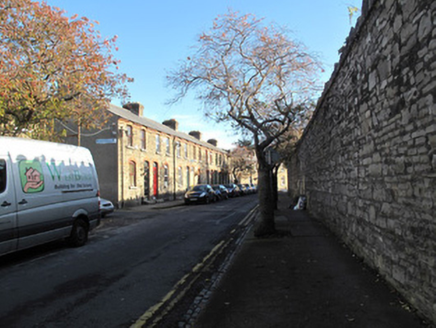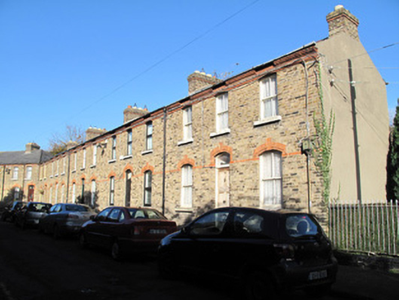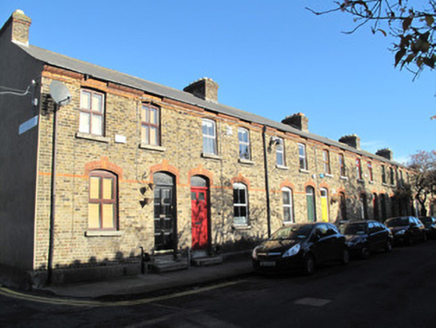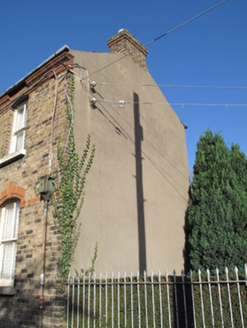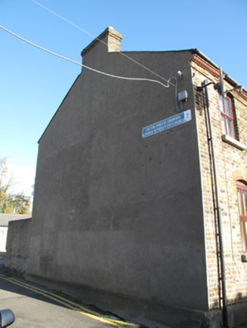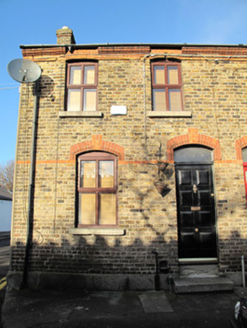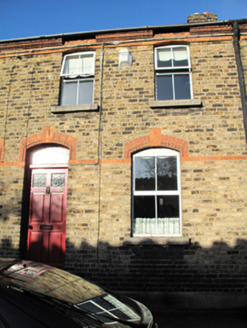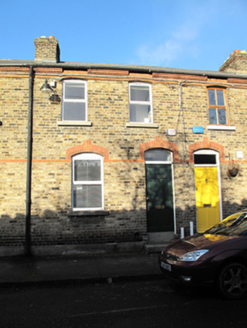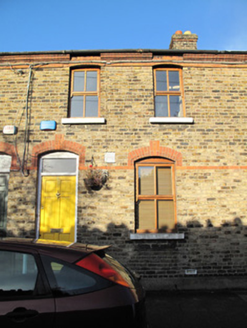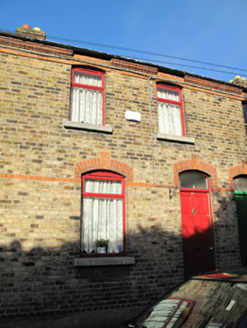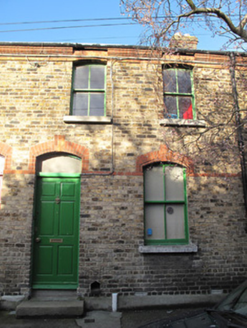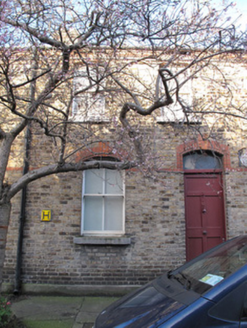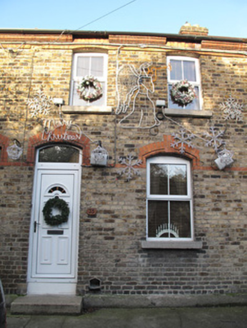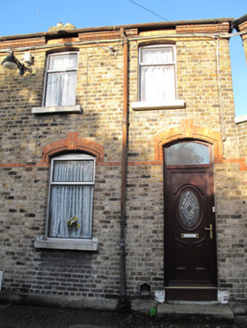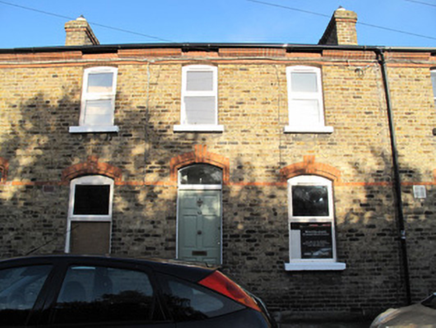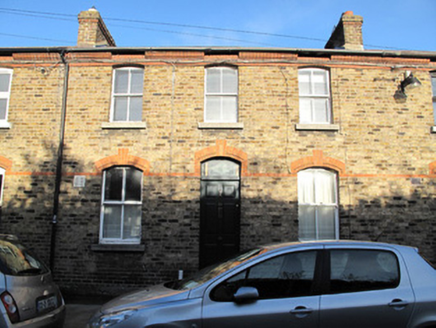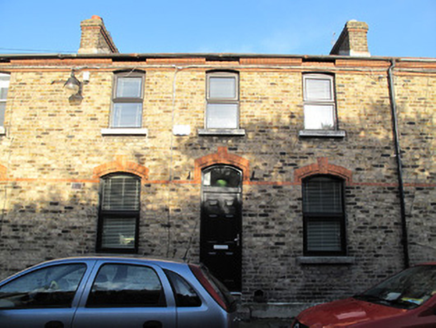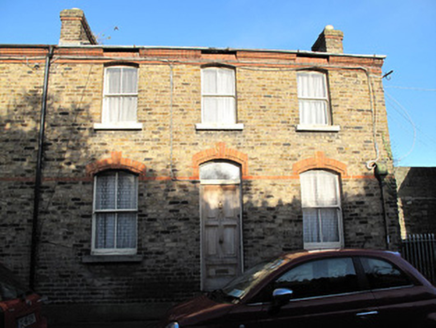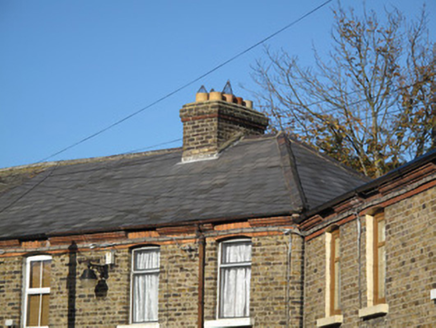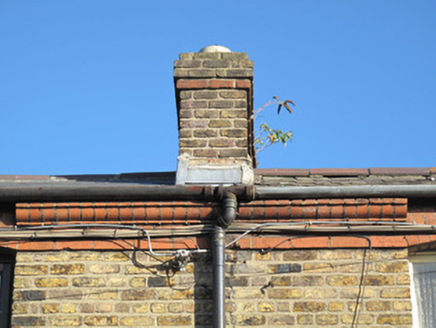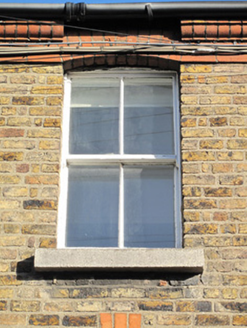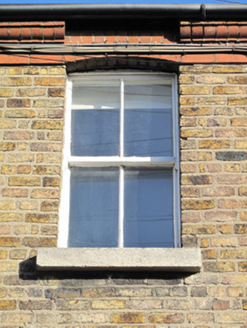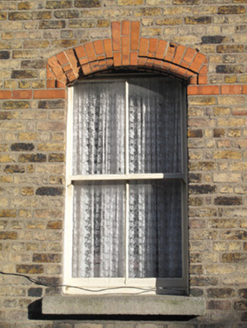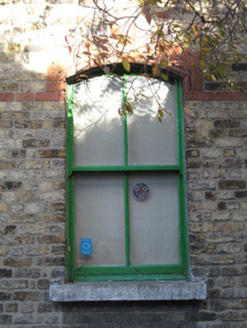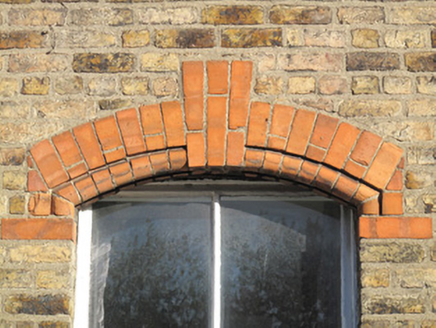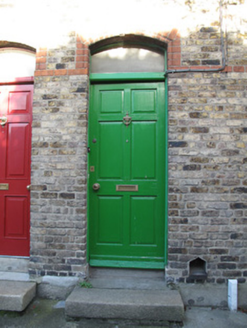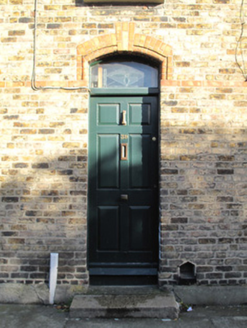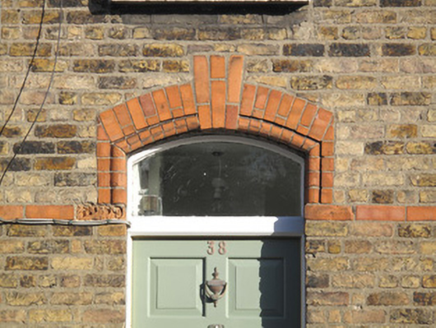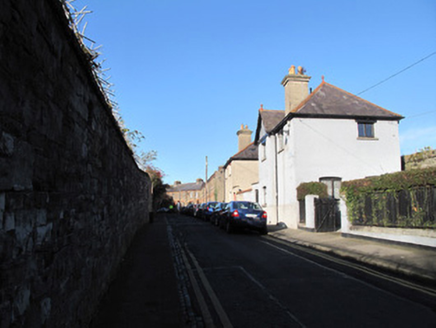Survey Data
Reg No
50070500
Rating
Regional
Categories of Special Interest
Architectural, Historical, Social
Original Use
House
In Use As
House
Date
1890 - 1895
Coordinates
314518, 234999
Date Recorded
29/10/2012
Date Updated
--/--/--
Description
Two terraces, one of nine two-bay two-storey houses, one of four three-bay two-storey houses and one two-bay two-storey house, built 1893, consisting of two ranges set at obtuse angle to each other. Pitched slate roofs, hipped to centre corner, with yellow and red brick chimneystacks, clay ridge tiles, carved red brick eaves course and cast-iron rainwater goods. Yellow brick, laid in English garden wall bond, to front (south) elevation, rendered walls to rear (north) and side (south-east and south-west) elevations. Red brick impost course to ground floor to front, granite plinth course. Cast-iron bootscrapes set within pointed arch rendered openings to walls. Segmental-arched window openings throughout, red brick voussoirs, granite sills, carved red brick voussoirs and keystones to ground floor windows, some two-over-two pane timber sash windows, some replacement uPVC windows. Segmental-arched door openings, carved red brick voussoirs and keystones, timber panelled doors and plain overlights, doors opening onto granite steps to footpath.
Appraisal
Designed by Charles Herbert Ashworth, this group was built by the Dublin Artisan’s Dwellings Company, which was established in 1876 to help to deal with the housing crisis in the city by providing housing for the tradesmen and skilled workers of the city. Though modest in scale and form, these buildings display a regularity of design and proportion, seen in the even fenestration arrangement and shared roofline. The surviving salient features, such as timber sash windows and polychrome brickwork are used to good effect to enliven the façade, while the in-built bootscrapes provide additional interest. Although some houses have been altered, a continuity of design can still be seen throughout, with the terrace as a whole making a considerable contribution to the architectural and social history of the area.
